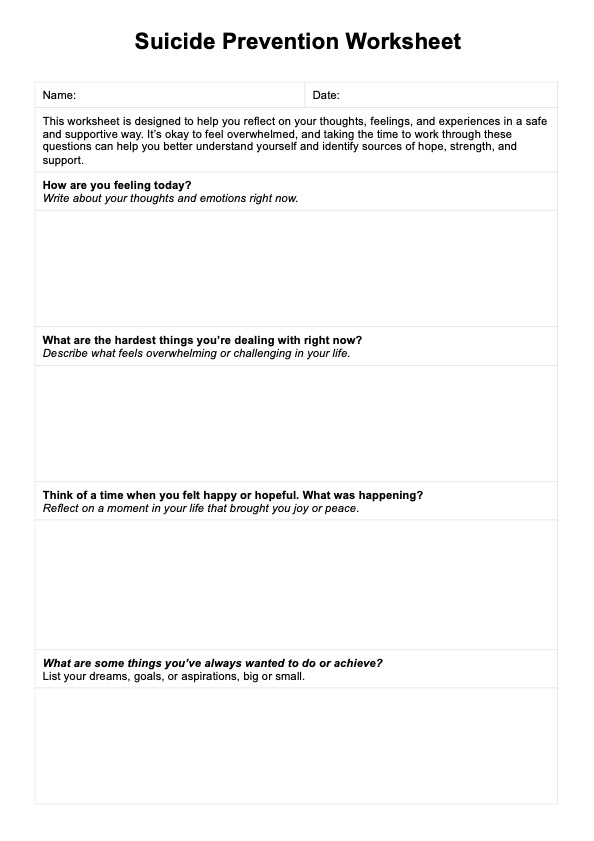Common warning signs include talking about wanting to die, expressing hopelessness, withdrawing from activities, mood swings, giving away possessions, and preoccupation with death.

Suicide Prevention Worksheets
Download a free Suicide Prevention Worksheet template from Carepatron. Use this resource to help your clients during therapy sessions.
Suicide Prevention Worksheets Template
Commonly asked questions
Listen actively, find the leading cause, validate their feelings, encourage professional help, assist in creating a safety plan, remove access to lethal means, and follow up regularly.
Communicate availability and limitations, be supportive without taking on responsibility, encourage professional help and awareness of the crisis lifeline, prioritize self-care, set communication boundaries, and respect autonomy. All of these factors can help to save lives.
EHR and practice management software
Get started for free
*No credit card required
Free
$0/usd
Unlimited clients
Telehealth
1GB of storage
Client portal text
Automated billing and online payments











